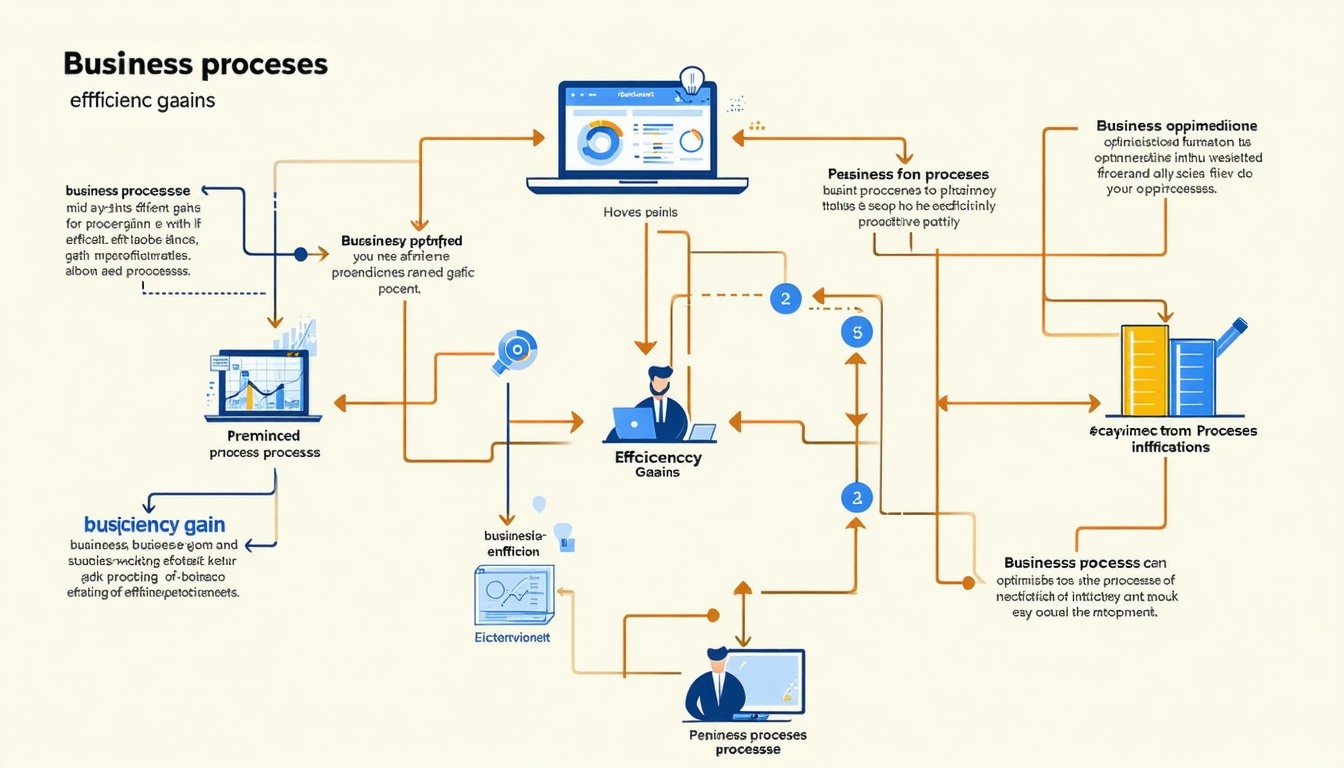
Top Strategies for Business Process Improvement

Unlocking the potential of your business through streamlined processes is crucial for staying competitive in today's market.
Identifying Bottlenecks in Your Processes
Something Powerful
Tell The Reader More
The heading and subheading tells us what you're offering, and the form heading closes the deal. Over here you can explain why your offer is so great it's worth filling out a form for.
Remember:
- Bullets are great
- For spelling out benefits and
- Turning visitors into leads.
The first step in improving business processes is identifying where bottlenecks occur. These are points within a process where the flow of operations slows down, leading to inefficiencies and delays. By mapping out each step of your workflow and collecting data on where delays happen, you can pinpoint specific areas that need attention.
Once identified, bottlenecks can be addressed through various strategies such as reallocating resources, adjusting workflows, or implementing new tools to streamline operations. Effective identification and resolution of bottlenecks can lead to significant improvements in overall process efficiency.
Leveraging Technology for Automation
Technology plays a critical role in modern business process improvement. Automation tools can handle repetitive and time-consuming tasks, freeing up employees to focus on more strategic activities. By integrating software solutions like ERP systems, CRM tools, and workflow automation platforms, businesses can enhance productivity and reduce the margin for human error.
When considering automation, it's essential to evaluate which processes will benefit most from technology integration. Start with tasks that are highly repetitive and rule-based, and gradually expand to more complex processes as your team becomes comfortable with the new systems.
Implementing Continuous Improvement Models
Continuous improvement models, such as Lean, Six Sigma, and Kaizen, provide structured approaches for enhancing business processes. These models emphasize regular assessment and incremental changes to drive continuous improvements over time. By fostering a culture of continuous improvement, businesses can adapt more swiftly to changes and maintain a competitive edge.
Implementing these models involves training employees on the principles and tools of the chosen methodology, setting clear improvement goals, and regularly reviewing progress. Success with continuous improvement models depends on commitment from all levels of the organization, from top management to frontline employees.
Engaging Employees in Process Improvement
Employees are often the best source of insights into process inefficiencies and potential improvements. Engaging employees in the process improvement journey can lead to more effective and sustainable changes. Encourage open communication and create channels for employees to share their observations and suggestions.
Involving employees in decision-making and problem-solving fosters a sense of ownership and accountability. Providing training and incentives for participation in process improvement initiatives can further motivate employees to contribute their best ideas and efforts.
Measuring Success and Adjusting Strategies
To ensure that process improvements are effective, it's crucial to establish metrics for measuring success. Key performance indicators (KPIs) related to process efficiency, cost savings, customer satisfaction, and other relevant factors should be tracked regularly. These metrics provide valuable feedback on the impact of implemented changes and highlight areas that may need further adjustment.
Regularly reviewing performance data and adjusting strategies as needed ensures that your process improvement efforts remain aligned with business goals. This iterative approach allows for continuous refinement and optimization of processes, leading to sustained improvements over time.

